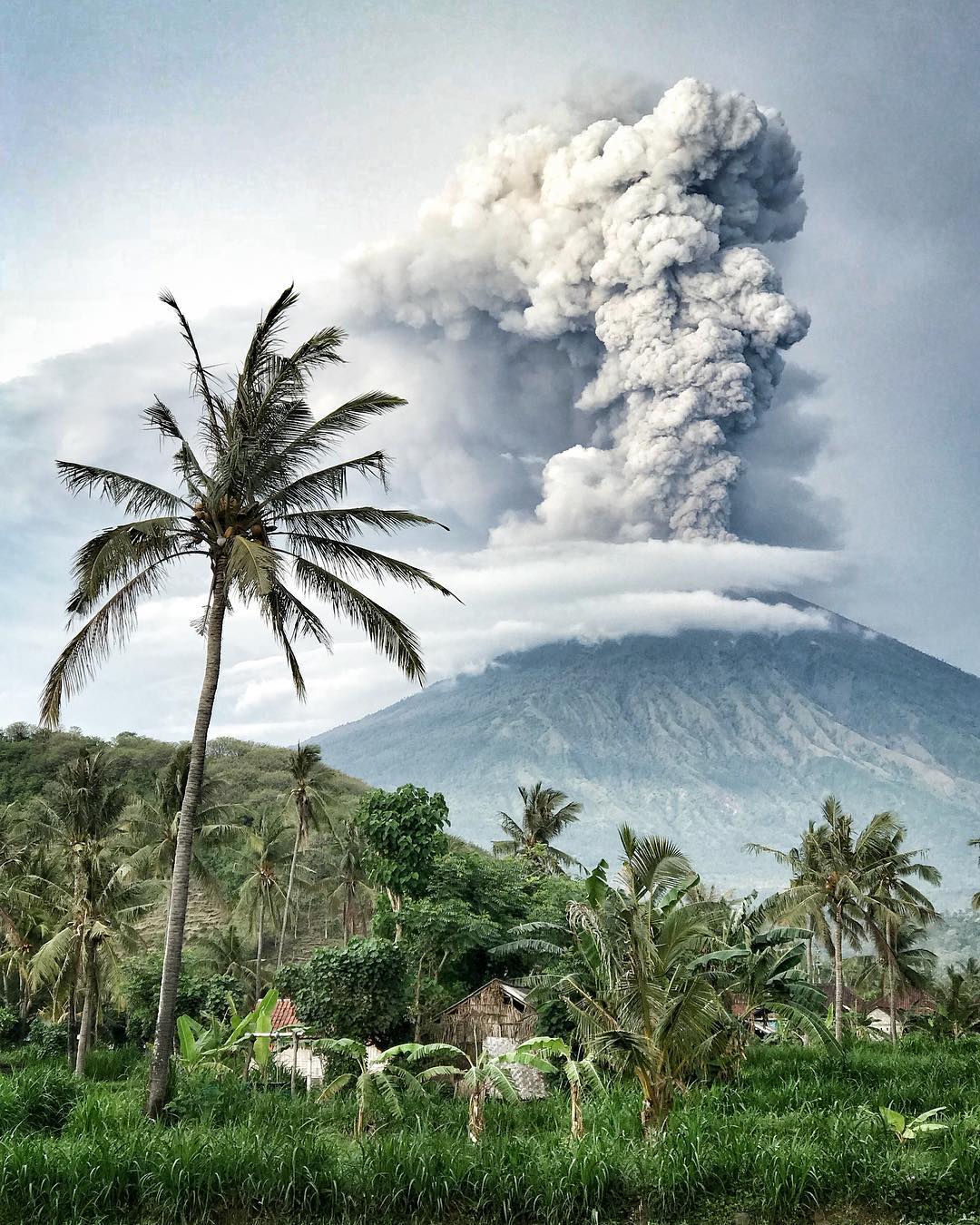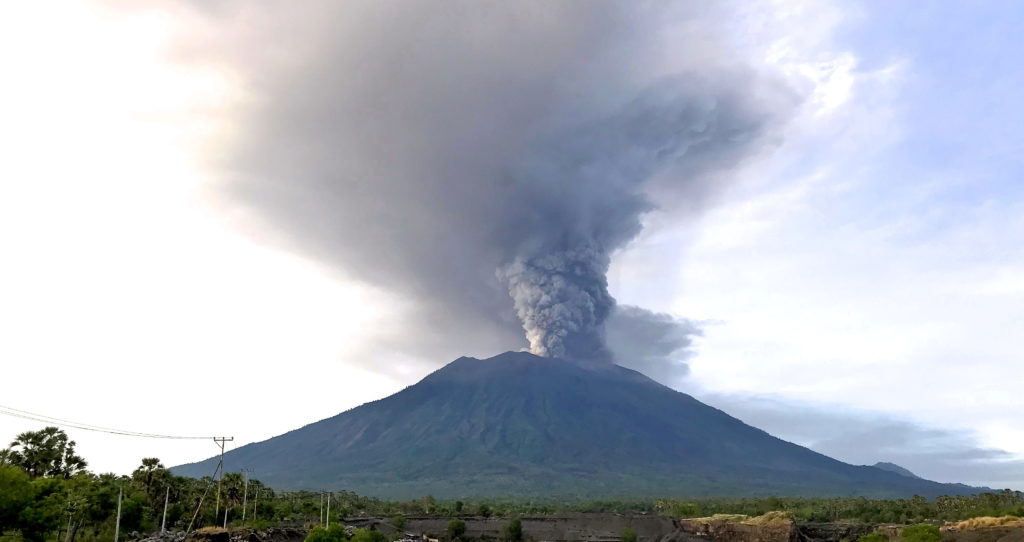Mount Agung (“Gunung Agung” as the locals refer to it) is an active volcano on the tropical Island of Bali, Indonesia. Gunung means “mountain” and Agung means “Great” in the Indonesian language so the direct translation is “The Great Mountain”. At an altitude of 3,031 meters, it is the highest point on Bali and the fifth largest volcano in the Indonesian archipelago (Which has the highest incidence of active Volcano’s within in the Pacific ‘Ring of Fire’). The Bali Volcano is located on the eastern side of Bali and is considered the holiest point on the Island, similar to how the ancient Greeks used to view Mount Olympus as the holiest location in Greece. Besakih, the mother temple for all Hindus on Bali is located on the slopes of Mount Agung exactly half way up the Great Mountain. The Balinese population perceives Mount Agung as the ‘navel of the world’ and some believe that Mount Agung is a replica of Mount Meru, a sacred mountain in the Hindu, Jain and Buddhist Cosmologies. Balinese Hindu’s sleep with their heads oriented in the direction of the Bali Volcano and with their feet facing the sea. Many Balinese believe that the gods are looking down from the top of the mountain to be able to oversee day to day life on “The Island of the Gods”. Because Gunung Agung is seen as the residence of the gods, eruptions are seen as a sign of their displeasure.
The history of Bali volcanic eruptions
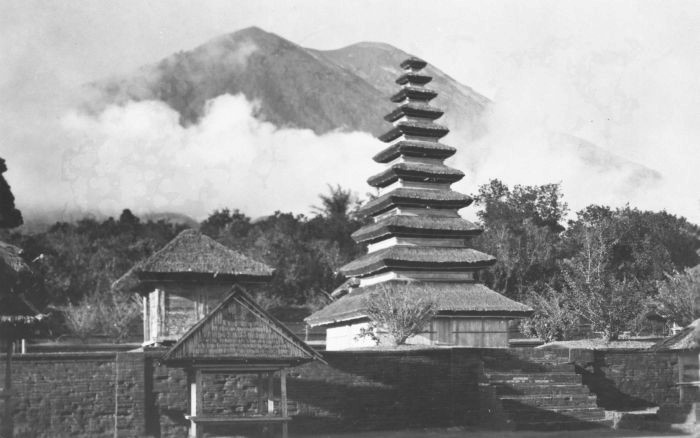 The history books describe a huge volcanic eruption in 1350. There is not much else mentioned in the books except that the land around the Besakih temple was extremely fertile at this time. There are records of minor volcanic activity during the years of 1808 and 1843. In 1963 and 1964 an eruption occurred and many villages were destroyed and an estimated 1,600 people were killed while another 86,000 residents remained homeless. But the lava flows just avoided the mother temple “Pura Besakih” by only a few meters. This auspicious event was interpreted by the local Balinese Hindu population as a wonderful favor of the gods.
The history books describe a huge volcanic eruption in 1350. There is not much else mentioned in the books except that the land around the Besakih temple was extremely fertile at this time. There are records of minor volcanic activity during the years of 1808 and 1843. In 1963 and 1964 an eruption occurred and many villages were destroyed and an estimated 1,600 people were killed while another 86,000 residents remained homeless. But the lava flows just avoided the mother temple “Pura Besakih” by only a few meters. This auspicious event was interpreted by the local Balinese Hindu population as a wonderful favor of the gods.
In September 2017 the Bali volcano became active again after being dormant for 53 years. The eastern part of Bali experienced numerous volcanic earthquakes, peaking with 300 to 400 mini quakes per day. The frequency and intensity of these quakes caused much alarm. With the increased rumbling and seismic activity around the volcano, the alert levels were raised and over 100,000 Balinese living in the danger zone were evacuated from their homes. The Indonesian National Disaster Management Authority declared a 12-kilometer exclusion zone around the volcano. On 21 November 2017, activity increased once again. A Phreatic eruption took place, with the ash cloud reaching far over Bali. Early morning 25 November 2017, a Phreatomagmatic eruption began. The resulting eruption plume was reported to have risen about 4 km above the summit of the crater. With fresh magma on the surface, the Indonesian authorities announced code red which is the highest threat level and means a new eruption is imminent.
How Does the Bali volcano affect Teak Bali?
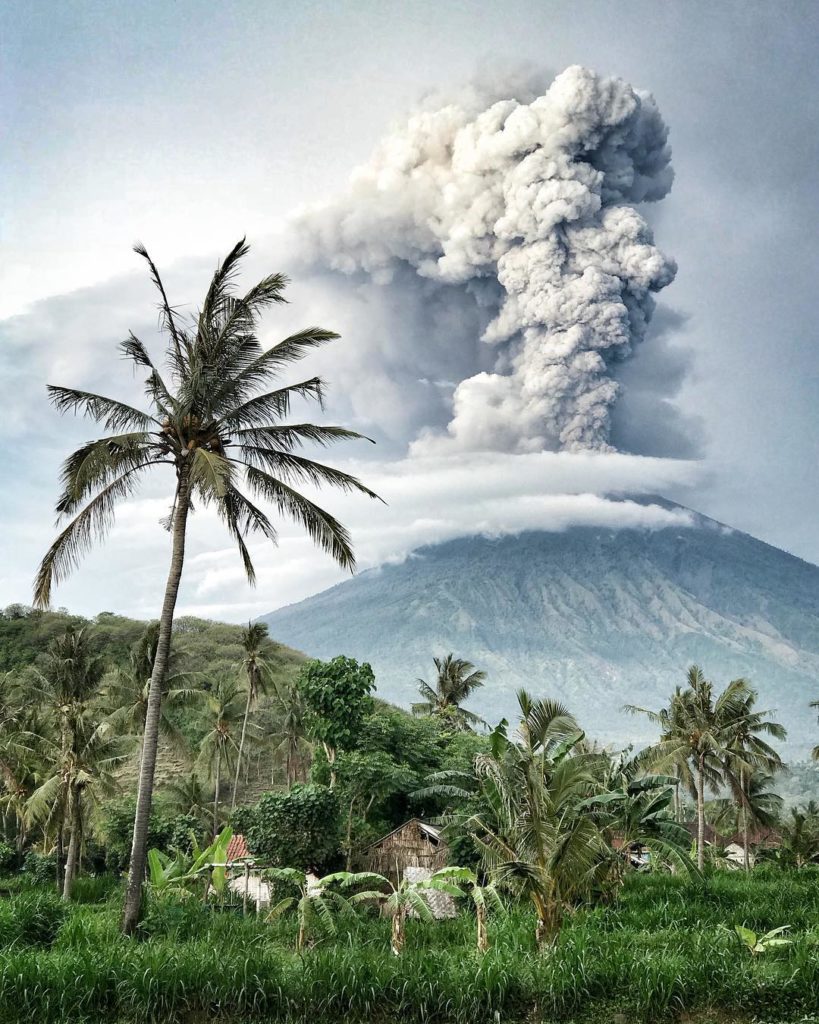 Gratefully, we can report that all PT Teak Bali employees and family are in the safe zone. Two of our staff have extended family that live in the affected areas. Our thoughts go to their family members and all Balinese who are living in the affected areas. Many Balinese had to flee their homes, leaving farmland and animals behind. Our Human Resources and Management team worked with all Teak Bali staff that were aiding affected family members by giving them much needed time off. Also, the management team provided safety masks for the entire office and their families in the event of a big eruption.
Gratefully, we can report that all PT Teak Bali employees and family are in the safe zone. Two of our staff have extended family that live in the affected areas. Our thoughts go to their family members and all Balinese who are living in the affected areas. Many Balinese had to flee their homes, leaving farmland and animals behind. Our Human Resources and Management team worked with all Teak Bali staff that were aiding affected family members by giving them much needed time off. Also, the management team provided safety masks for the entire office and their families in the event of a big eruption.
Our head office in Bali is located in Denpasar at a safe distance of 60 km from the volcano. We are happy to say that business is running as usual and our current production schedule is not affected by the Bali volcanic activity. Our production facility is based in Surabaya (On the Island of Java) about 320 KM from the Volcano and is a 50 minute plane ride from Bali. We are manufacturing in Surabaya because the tropical hardwoods that we use for our projects are purchased from Surabaya and also because Surabaya is the nearest International shipping port to Bali (Benoa Harbor in Bali is not an International port).
What kind of volcano is Mount Agung and how does it erupt?
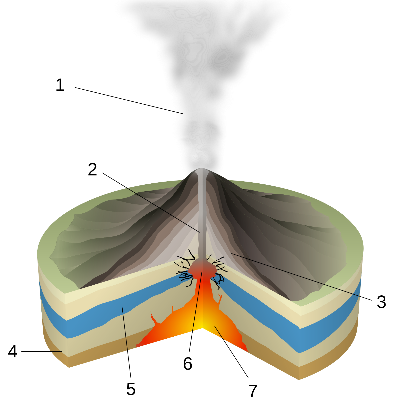 Gunung Agung is a stratovolcano also known as a composite volcano, with a wide, deep crater that occasionally emits smoke and ash. It is comprised of several layers of hardened volcanic emission, tephra, pumice and volcanic ash. Stratovolcanoes are characterized by periodic explosive and effusive eruptions. Mount Agung also experiences phreatic eruptions (Also known as Ultravulcanian) or steam-blast eruptions. This occurs when magma heats ground or surface water and the extreme temperature of the magma causes near-instantaneous evaporation to steam, resulting in an explosion of steam, water, ash, rock and volcanic bombs.
Gunung Agung is a stratovolcano also known as a composite volcano, with a wide, deep crater that occasionally emits smoke and ash. It is comprised of several layers of hardened volcanic emission, tephra, pumice and volcanic ash. Stratovolcanoes are characterized by periodic explosive and effusive eruptions. Mount Agung also experiences phreatic eruptions (Also known as Ultravulcanian) or steam-blast eruptions. This occurs when magma heats ground or surface water and the extreme temperature of the magma causes near-instantaneous evaporation to steam, resulting in an explosion of steam, water, ash, rock and volcanic bombs.
Should tourists be concerned with Volcanic eruptions in Bali?
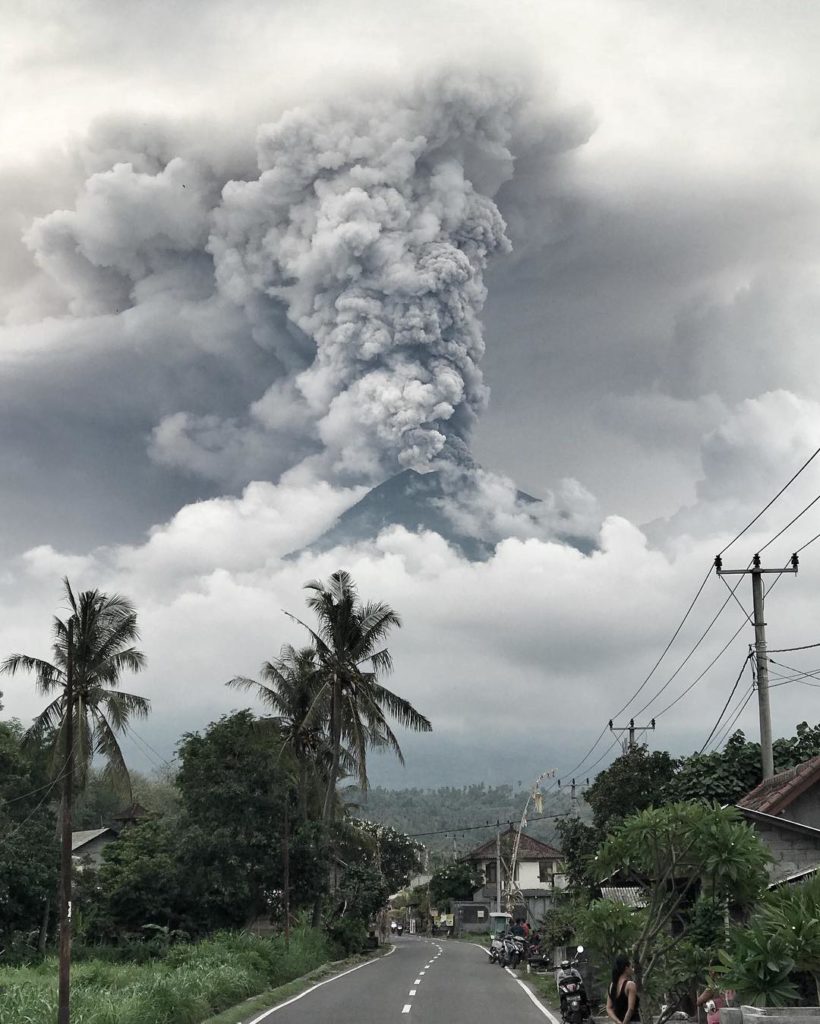 According to the Bali Hotel and Restaurant Association, 5,000 tourists cancelled their bookings in November 2017. As more than 20% of the population directly works in the tourism industry, the volcano is definitely affecting local business. Nobody can say when and if the Mount Agung will have a full eruption. Some Volcanologist’s predict that an eruption is imminent while others say it could take several months or even years.
According to the Bali Hotel and Restaurant Association, 5,000 tourists cancelled their bookings in November 2017. As more than 20% of the population directly works in the tourism industry, the volcano is definitely affecting local business. Nobody can say when and if the Mount Agung will have a full eruption. Some Volcanologist’s predict that an eruption is imminent while others say it could take several months or even years.
A common question we receive is whether Bali is still safe to visit? The answer is yes and no as people have different opinions about this subject. All we can say is that everyone should be prepared in case of any event. We strongly advise all the tourists to stay outside the danger zone. Furthermore, people should be aware of the volcanic ash than can fall during an eruption. The concentrations of gasses such as Carbon dioxide and fluorine can be toxic to humans. The ash fall can lead to crop failure, animal death and deformity and can lead to human illness. Another issue is that volcanic ash contains abrasive particles which can irritate the surface of the skin and eyes, causing redness and inflammation. There can also be potential long term lung damage from inhaling these particles.
Many people are asking why were so many flights cancelled? This is because flying during a volcanic eruption can be dangerous. During the past two decades, more than 60 airplanes have been damaged by in-flight encounters with volcanic ash. Some of these encounters have resulted in power loss to the engines, requiring emergency landings. Fortunately, till now no aircraft has crashed because of a encounter with volcanic ash. Ngurah Rai airport in Bali had periodic closures in November 2017 but has been open almost full time since then.
What to do if the Bali volcano erupts?
According to the www.ready.gov/volcanoes website, there are many things that can be done to protect yourself, your family and your property in the event of a volcanic eruption. They discuss the following topics:
- What to do before the Bali volcano erupts?
- What to do on the moment the Bali volcano erupts?
- How to protect yourself from falling ashes from the Bali volcano?
If you are in immediate danger or require assistance, please contact the National Disaster Management Agency Call-center. Their contact details are:
- Emergency 24 hour Number: (0361) 234099
- Website: www.bnpb.go.id
How can I help the refugees of the Bali Volcano?
As the magma continues to rise in Mount Agung and many people have fled their homes, any kind of help is welcome. The size of the exclusion zone has been decreased but over 75,000 people are still displaced from their homes and farmland. Refugees are living in tent-towns, make-shift shelters, sport complexes and community halls in surrounding areas from Klungkung to North Bali. Most people didn’t have time enough to pack and store all their belongings. Thankfully many groups, communities and volunteers are lending a helping hand, aiding in getting supplies to different refugee camps around Bali. Whether you are currently in Bali or somewhere else, you can help! Following is a list of non-profit organizations that are involved in supporting the evacuees:
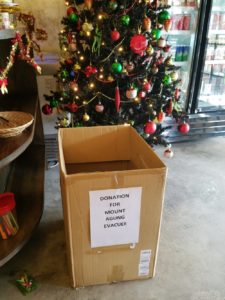
- East Bali Poverty Project: A reputable charity here in Bali that works on the slopes of the mountain. they are collecting donations to buy supplies for refugee camps in North Bali where there are over 20,000 people taking shelter. Their teams are on site and need essential supplies for children, elderly, sick, disabled and pregnant. Donations can be given by bank transfer, paypal or via the crowdfunding page. Go to www.eastbalipovertyproject.org for details.
- Nazava Filters: As with any natural disaster relief, water is a main priority. Nazava are filters that eliminate bacteria, viruses and parasites, making tap or even river water safe to drink and will certainly come in useful whilst water levels remain low. One filter can make enough water for 8 people. Donate now through their crowdfunding page: http://bit.ly/2hMZ2JI.
- Bali Children’s Project: Focused on the welfare of children, BCP have been watching the families of their children as they move to evacuation zones. They have identified many needs including clothes, blankets, baby food and milk and normal supplies. You can donate here: http://balichildrensproject.org/mount-agung-appeal/
- Kopernik: Kopernik is also helping with the purchase and and the transportation of Nazava water filters, along with hygiene kits and food. You can donate here: https://kopernik.info/project/mount-agung-emergency-response-three
What are the best supplies that I can donate for the Bali volcano victims? Gallon containers of Water, rice, spices, long lasting vegetables, eggs, cooking utensils, water pumps, ropes, torches and batteries, tents and tarps and toys for children. Also, there is a clear need for personal hygiene items such as diapers, female sanitary napkins, soaps, toothpaste and shampoos.
What happens moving forward regarding Mount Agung?
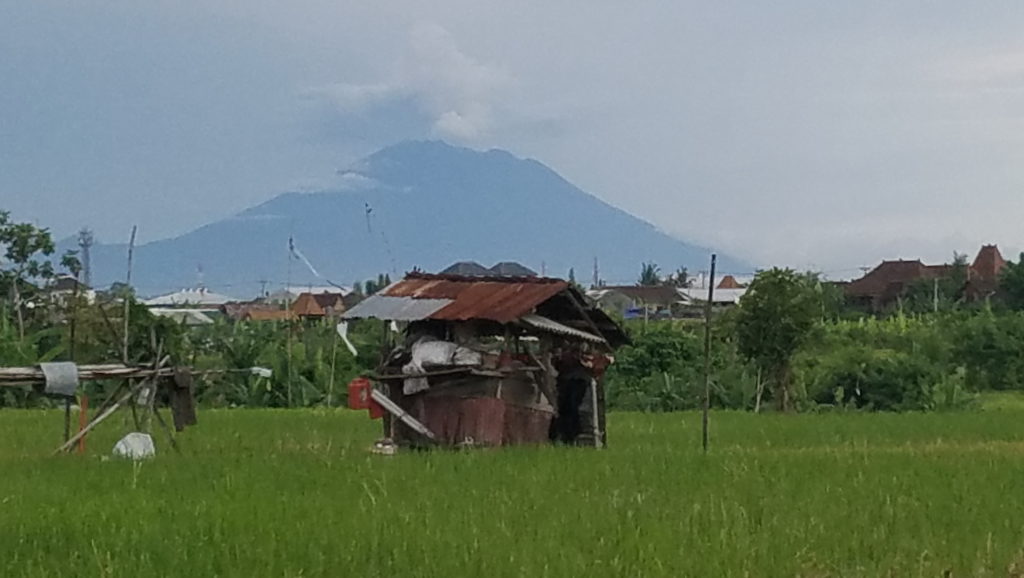 Daily life in Bali continues. At this time the people in Bali can not do much more than to remain calm and pray that the volcano will be kind to the Island of the Gods. Hopefully Gunung Agung will show compassion not causing great harm to our lovely Island. As the volcanic activity on the Holy Mountain has recently decreased, the press has also gone quiet with their reporting. Nevertheless, our hearts go out to the displaced individuals currently living in the refugee camps during the middle of the rainy season here in Indonesia. If you would like to stay up to date on all the developments of the Mount Agung eruption, please follow the ubudnowandthen.com website. They are publishing an excellent Blog Series written by famous Indonesian photographer Rio Helmi. Rio gives an excellent account of how the various villages in the Exclusion zone are affected, what is happening in the refugee camps as well as some of the political push and pull that is occurring with this ongoing state of affairs. For updated information (In the Indonesian language) from the Center for Volcanology and Geological Hazard Mitigation, please visit their website at vsi.esdm.go.id. As the Bali Volcano eruption is an ongoing event, this Blog will be updated as more information becomes available.
Daily life in Bali continues. At this time the people in Bali can not do much more than to remain calm and pray that the volcano will be kind to the Island of the Gods. Hopefully Gunung Agung will show compassion not causing great harm to our lovely Island. As the volcanic activity on the Holy Mountain has recently decreased, the press has also gone quiet with their reporting. Nevertheless, our hearts go out to the displaced individuals currently living in the refugee camps during the middle of the rainy season here in Indonesia. If you would like to stay up to date on all the developments of the Mount Agung eruption, please follow the ubudnowandthen.com website. They are publishing an excellent Blog Series written by famous Indonesian photographer Rio Helmi. Rio gives an excellent account of how the various villages in the Exclusion zone are affected, what is happening in the refugee camps as well as some of the political push and pull that is occurring with this ongoing state of affairs. For updated information (In the Indonesian language) from the Center for Volcanology and Geological Hazard Mitigation, please visit their website at vsi.esdm.go.id. As the Bali Volcano eruption is an ongoing event, this Blog will be updated as more information becomes available.
Photo Credits to www.instagram.com/karamzes

